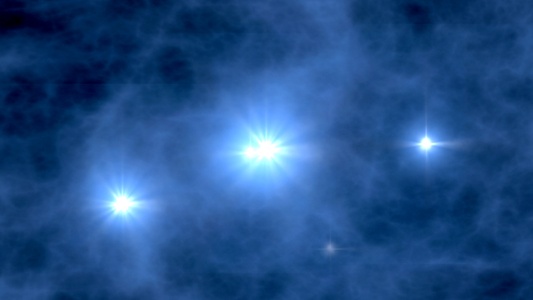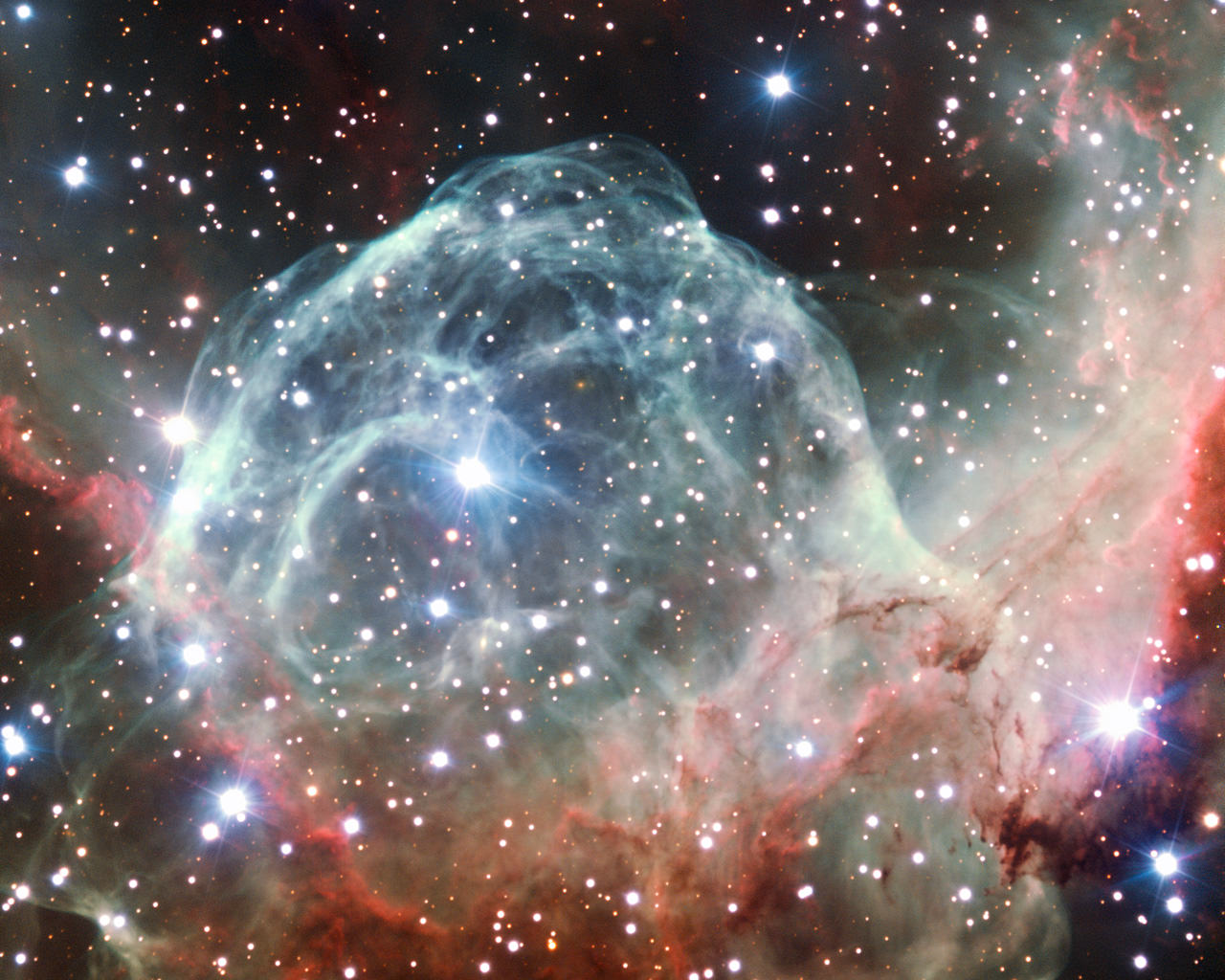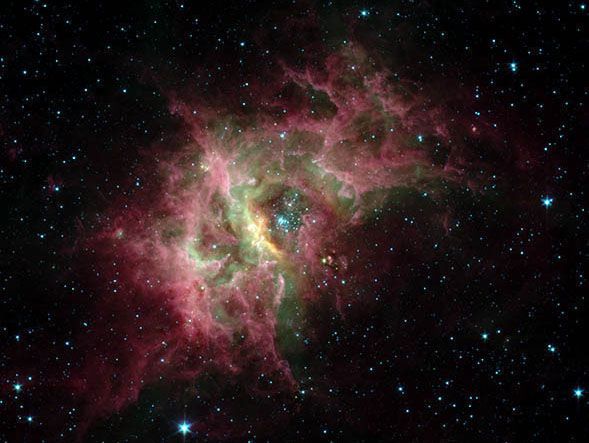In this series we are exploring the weird and wonderful world of astronomy jargon! You’ll be a source of inspiration from today’s topic: giant molecular clouds!
Continue reading “Astronomy Jargon 101: Giant Molecular Clouds”New Hubble Image Shows Dark Cocoons Where New Stars are Forming

Star formation is a complex process. But in simple terms, a star forms due to clumps and instabilities in a cloud of molecular hydrogen called a Giant Molecular Cloud (GMC). As more and more gas accumulates and collapses inward, the pressure becomes immense, the gas eventually heats up to millions of degrees, and fusion begins.
But what happens to the gas that remains as the young star forms? Some of it can form a type of dark halo called a frEGG—a free-floating Evaporating Gaseous Globule. And, proving that the Universe is indeed strange, the frEGG itself can contain another stellar embryo. The frEGG can be quite opaque, making it difficult to observe the star’s formation process in all its complexity.
Continue reading “New Hubble Image Shows Dark Cocoons Where New Stars are Forming”What’s Snuffing Out Galaxies Before Their Time?

In the Milky Way, the formation rate of stars is about one solar mass every year. About 10 billion years ago, it was ten solar masses every year. What happened?
Stars are born in giant molecular clouds (GMCs), and astronomers think that the environment in galaxies affects these clouds and their ability to spawn new stars. Sometimes the environment is so extreme that entire galaxies stop forming new stars.
Astronomers call this “quenching,” and they want to know what causes it.
Continue reading “What’s Snuffing Out Galaxies Before Their Time?”Early Massive Galaxies ran out of gas, Shutting Down Their Star Formation

Galaxies that formed within the first few billion years after the Big Bang should have lived long, healthy lives. After all, they were born with rich supplies of cold hydrogen gas, exactly the fuel needed to continue star formation. But new observations have revealed “quenched” galaxies that have shut off star formation. And astronomers have no idea why.
Continue reading “Early Massive Galaxies ran out of gas, Shutting Down Their Star Formation”Are the Burned-Out Remnants of the First Stars all Around us?

The first stars to appear in the universe lived fast and died young. Today, none of them likely remain. But their remnants, the black holes and neutron stars, might still wander around the cosmos. Unfortunately, they’re extremely difficult to detect unless they merge, and according to new research the only way to see them would be to conduct an unprecedented survey of the local volume of the universe.
Continue reading “Are the Burned-Out Remnants of the First Stars all Around us?”The Galactic Beauty of Star Formation

I’d never seen galaxy images like this before. Nobody had! These images highlight star forming regions in nearby(ish) galaxies. There are still a number of unanswered questions surrounding how star formation actually occurs. To answer those questions, we are observing galaxies that are actively forming stars within giant clouds of gas. Until recently, we didn’t have the resolution needed to clearly image the individual gas clouds themselves. But images released by a project called PHANGS (Physics at High Angular resolution in Nearby GalaxieS) in a collaboration between the European Southern Observatory Very Large Telescope and the Atacama Large millimeter/submillmeter Array (ALMA) have provided never before seen detail of star forming clouds in other galaxies.

One of the Brightest Star-Forming Regions in the Milky Way, Seen in Infrared
Certain parts of the galaxy are more magical than others. There are barren wastelands where barely a particle strays through occasionally, and there are fantastical nebulae that can literally light up the sky. But beyond their good looks, those nebulae hold secrets to understanding some of the most important features of any galaxy – stars. Now, for the first time, a team from the University of Maryland managed to capture a high resolution image of one of the most active star-forming regions in our part of the galaxy. Data from that image are not only spectacular, but can illuminate the details of the star formation process.
Continue reading “One of the Brightest Star-Forming Regions in the Milky Way, Seen in Infrared”Black Holes don't Just Destroy, They Also Help With Star Formation
Black holes are the most powerful destructive forces in the universe. They can rip apart a star and scatter its ashes out of the galaxy at nearly the speed of light. But these engines of destruction can also pave the way for new stars to form, as a new study in Nature shows.
Continue reading “Black Holes don't Just Destroy, They Also Help With Star Formation”Star Formation Begins When Clouds of Gas Crash Into Each Other

To trigger star formation, you need to compress a lot of gas into not a lot of volume. To make a lot of stars at once, you need to really pack it in. Until now, astronomers haven’t been sure how to pull this off. But a collection of 20 papers outlines how to do it: make giant clouds of gas crash into each other.
Continue reading “Star Formation Begins When Clouds of Gas Crash Into Each Other”There are new Stars Forming Near the Core of the Milky Way Despite the Harsh Environment

The central core of our galaxy is not a friendly place for star formation, and yet new observations have revealed almost four dozen newly-forming systems. These results challenge our understanding of the complicated physics of our galactic heart.
Continue reading “There are new Stars Forming Near the Core of the Milky Way Despite the Harsh Environment”


